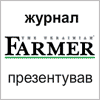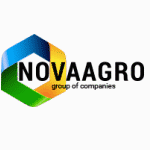The Road to Restoration: Post-War Recovery of the Ukrainian Agricultural Sector

The war started by Russia against Ukraine has left its mark on the country’s economy, particularly on agriculture. The disruption of supply chains and agricultural production has already caused significant damage to the people, the economy, and the environment of Ukraine. Despite these difficulties, the country faces the task of restoring the agriculture sector and making it sustainable.
Agricultural production is a key sector of Ukrainian exports. According to data for 2021, agricultural exports amounted to US$27.8 billion, which accounted for 41 percent of the total volume of exported goods. And the need to maintain production levels and secure supply chains for agricultural products has become a global challenge.
Ukraine is one of the leading global producers and exporters of agricultural products. It plays a crucial role in supplying oil crops and grains to the world market. In 2021/2022, the country produced more than 30 percent of the world’s sunflower and sunflower oil and over 27 percent of sunflower meal. The country ranks sixth in the world for production and third for exports of rapeseed (20 percent of world exports), fourth in production and third in exports of barley (17 percent of world exports), and sixth in production and fourth in exports of maize (12 percent of world exports).
But these indicators significantly changed during 2022. According to estimates by the KSE, the indirect losses of agriculture due to the war amount to US$34.25 billion. The direct losses are US$8.7 billion.
More than 84,000 units of equipment and machinery have been partially or completely destroyed, with an estimated value of US$2.9 billion. Grain storage facilities with a total capacity of 9.4 million tons were damaged or destroyed. The value of livestock resources lost by agricultural producers is approximately US$362 million. It is estimated that 5 million hectares of agricultural land (or 15 percent of arable land) in Ukraine are likely to be mined. According to the calculations, it will take up to five years to restore some areas of the agricultural sector.
Based on the experience of war and other global challenges such as COVID-19 and climate change, it is clear that Ukraine’s post-war recovery must focus on developing resilient and decentralized agri-food systems. To achieve this goal, several priorities should be followed.
The first priority is the development of local food systems. The agri-food system is essential for ensuring Ukraine’s food and ecological security. Currently, the system is based on large-scale and monoculture production, centralized logistics and processing, making it vulnerable to aggressors and potentially causing systemic consequences for supply chains both in Ukraine and worldwide. Therefore, Ukraine’s post-war recovery should prioritize the development of more adaptive, sustainable, and decentralized agri-food systems.
The second priority is the diversification of small and medium-sized agricultural enterprises, farms, and their cooperatives. Small and medium-sized farms are the backbone of creating resilient agri-food systems, accounting for about 60 percent of Ukraine’s gross agricultural product. Small and medium-sized farms and their cooperatives are crucial for self-employment, creating additional and diverse jobs in rural areas, and ensuring the self-sufficiency of rural territories. The year of war has shown that small-scale producers can better adapt and survive in extreme conditions by relying on short food chains, alternative production resources and mutual assistance.
The third priority is a transparent agricultural land market. The economic consequences of opening the land market in the post-war period for Ukraine, including the ability to attract domestic and foreign investors, will depend on the prices of land and transparent and fair conditions. In the context of post-war recovery, it may be worth considering the potential advantages of opening the agricultural land market to foreign investors, excluding citizens and businesses from aggressor countries. This issue goes beyond land pricing, as the arrival of international investors will bring not only financial resources, but also valuable experience to the country. Most importantly, these investors are likely to be effective advocates for Ukraine in their countries, standing up to the Russian threat. Opening the agricultural land market to foreign investors could create multifaceted advantages for the country.
To restore the agricultural sector of the economy, it is necessary to prioritize directing investment funds in specific ways.
Restore critical transport infrastructure objects such as railways, roads, and inland waterways to help restore normal logistics in some parts of the country and accelerate the recovery of exports.
Accelerate the de-mining of agricultural land, primarily on liberated territories located outside the reach of the artillery systems of the aggressor state.
Construct terminals for agricultural products near the state border of Ukraine with European Union countries and expansion of the throughput capacity of the road and rail infrastructure.
Increase the level of agricultural raw materials processing. Agricultural sector enterprises are sufficiently competitive producers and could independently expand their production potential, invest in processing capacities.
Prioritize of the livestock industry. The development of the livestock industry is important for ensuring the population’s food supply and preserving food security. Animal husbandry also provides significant added value and profit for agricultural enterprises, promotes regional economic development, and improves the quality of life in rural areas.
The key issue for Ukraine now is to win the war and liberate all the territories temporarily occupied by Russia.
This is the fifth in a series from the frontlines of Russia’s war against Ukraine by Vitalii Dankevych, an Economics Professor at Polissia National University. Read parts one, two, three, and four.
IC UAC according to Food Tank
- 908 reads








